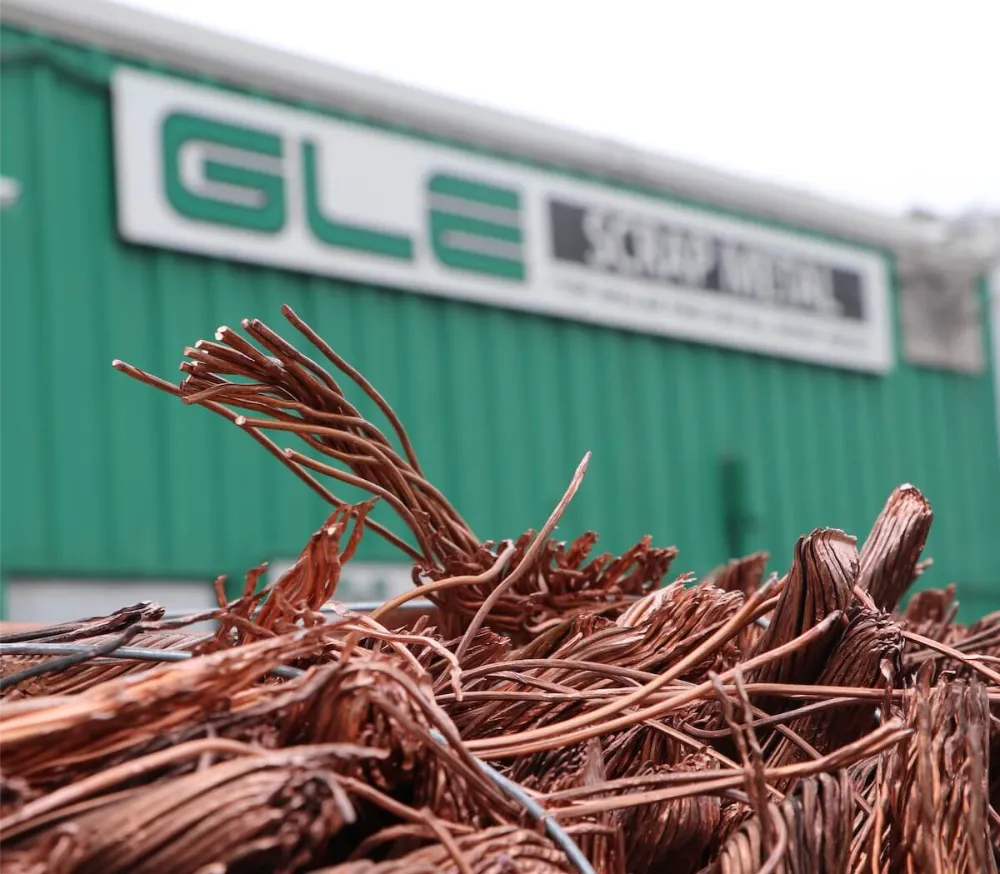Copper is one of the most profitable and easy-to-recycle metals hiding in plain sight. From old electronics to forgotten extension cords, copper scrap is everywhere, you just need to know where to look. With copper prices consistently high due to demand in construction, electronics, and green energy sectors, sourcing and selling copper has become a smart move for both hobbyists and professional scrappers.
In this guide, we’ll show you exactly where to find copper scrap, not just the obvious places, but 12 often-overlooked sources that many people miss. Whether you’re clearing out clutter or starting a side hustle, you’ll discover how to turn everyday waste into valuable metal.
Why Copper Scrap Is in High Demand
Copper’s unmatched conductivity, durability, and recyclability make it indispensable in industries ranging from renewable energy to telecommunications. Global demand continues to rise, driving up its market value. This means even small quantities of copper scrap can be worth serious money. By recovering and recycling copper, you not only cash in but contribute to sustainability.
12 Places to Find Copper Scrap That Most People Miss
Now that you understand why copper is in high demand, let’s explore some of the most surprising and overlooked places to find valuable copper scrap. These locations might already be part of your everyday surroundings, you just need to know where to look.
1. Inside Old Electronics And Devices
Old electronics like computers, televisions, DVD players, and mobile phones often contain significant amounts of copper in their internal wiring, coils, and circuit boards. These components are commonly made of copper due to its excellent conductivity. If you’re dealing with large quantities of electronic scrap, Electronic Scrap Analysis by Ledoux & Co. can help you determine the precise copper value and maximize your return.

2. Home Electrical Wiring and Extension Cords
Many households have a tangle of old extension cords and surplus electrical wiring tucked away in closets, garages, or basements. These cables typically contain copper inside plastic insulation. Even if they are damaged or non-functional, the copper inside remains valuable. Carefully stripping the insulation can yield clean copper ready for recycling.
3. Plumbing Fixtures and Copper Pipes
Older buildings and homes often used copper piping for plumbing. Renovation sites, home upgrades, and even demolition projects can generate piles of discarded pipes and fittings. Contact local contractors or home improvement crews, who might be willing to give away these metal remnants rather than pay disposal fees.
4. Large Appliances (Fridges, AC Units, Ovens)
Household appliances like refrigerators, air conditioning units, and ovens contain copper coils, compressors, and internal wiring. These components are often ignored when scrapping, but removing them safely can yield valuable copper parts. Ensure that refrigerants and other hazardous materials are disposed of responsibly before scrapping.
5. Power Tools, Electric Motors, and Compressors
Electric motors in broken power tools, washing machines, and air compressors are built with tightly wound copper coils. Items like drills, blenders, or lawnmowers that no longer function are ideal for copper salvage. With basic tools and safety precautions, you can extract these windings to resell.

6. Car Wiring, Alternators, and Starters
Automobiles are filled with copper wiring, particularly under the hood and in electrical systems. Components such as alternators, starters, and battery cables contain significant amounts of copper. If you have access to junk cars or auto parts, salvage these parts before recycling the rest of the vehicle.
7. Scrap Yards and Junk Dealers
Scrap yards are common places where copper-rich items are dropped off by the public. Build relationships with local junk dealers and scrapyard managers. Often, they set aside unsellable or broken items that still contain usable copper, giving you a potential edge for sourcing valuable materials.
8. Demolition Sites And Construction Waste
Demolition and construction sites are excellent sources of scrap copper. Wiring, conduit, and plumbing removed during teardown often go to waste unless salvaged. With proper permissions, you can collect these leftover materials before they’re discarded. Reach out to local builders or contractors for opportunities.
9. Old Holiday Lights and Decorative Wiring
Holiday lights that no longer work often get thrown away, but they contain copper wiring under their colored sheathing. Even though each string may contain small amounts, the copper adds up quickly when gathered in bulk. Cut off the plugs and gather the wire for recycling.

10. Computer Servers and Network Equipment
Large-scale electronic equipment, like old servers and routers, is filled with copper wires and heat sinks. Companies that upgrade their IT infrastructure regularly dispose of old equipment that still holds valuable metals. Partnering with IT departments or e-waste recyclers can offer a reliable source.
11. Electric Panels and Circuit Breakers
Electrical panels, especially in older buildings, contain thick copper bus bars and wires. These can be challenging to dismantle safely, so use proper tools and protective gear. Always ensure the power is disconnected and consult a professional if needed. The effort is well worth the return.
12. Thrift Stores, Flea Markets & Curbside Finds
People often discard electronics and appliances that seem broken or outdated. Thrift stores and flea markets may sell them cheaply, and curbside bulk pickup days can be treasure hunts for scrappers. Always test for copper-bearing components and salvage them before sending anything to a landfill.

How to Maximize Scrap Value With Professional Testing
Once you’ve collected copper, verifying its purity ensures you get top dollar. Professional labs like Ledoux & Co. provide ISO 17025-accredited precious metal testing that guarantees accuracy. Our services include Electronic Scrap Analysis, helping you extract maximum value from your scrap.
For businesses and recyclers dealing with high volumes, Ledoux’s precise testing methods are essential. Their results are commercial-grade and trusted across industries.
Start Scrapping Smarter Today
Copper scrap is all around you, in junk drawers, abandoned appliances, and overlooked tech. By knowing where to find copper scrap, you can turn hidden waste into real profit. Whether you’re cleaning out a basement or scaling a recycling business, one thing is clear, testing your copper with Ledoux & Co. gives you the accuracy, trust, and value you need.
Visit Ledoux & Co. to submit a sample or contact us today. Let your next copper find pay off with professional analysis you can count on.














